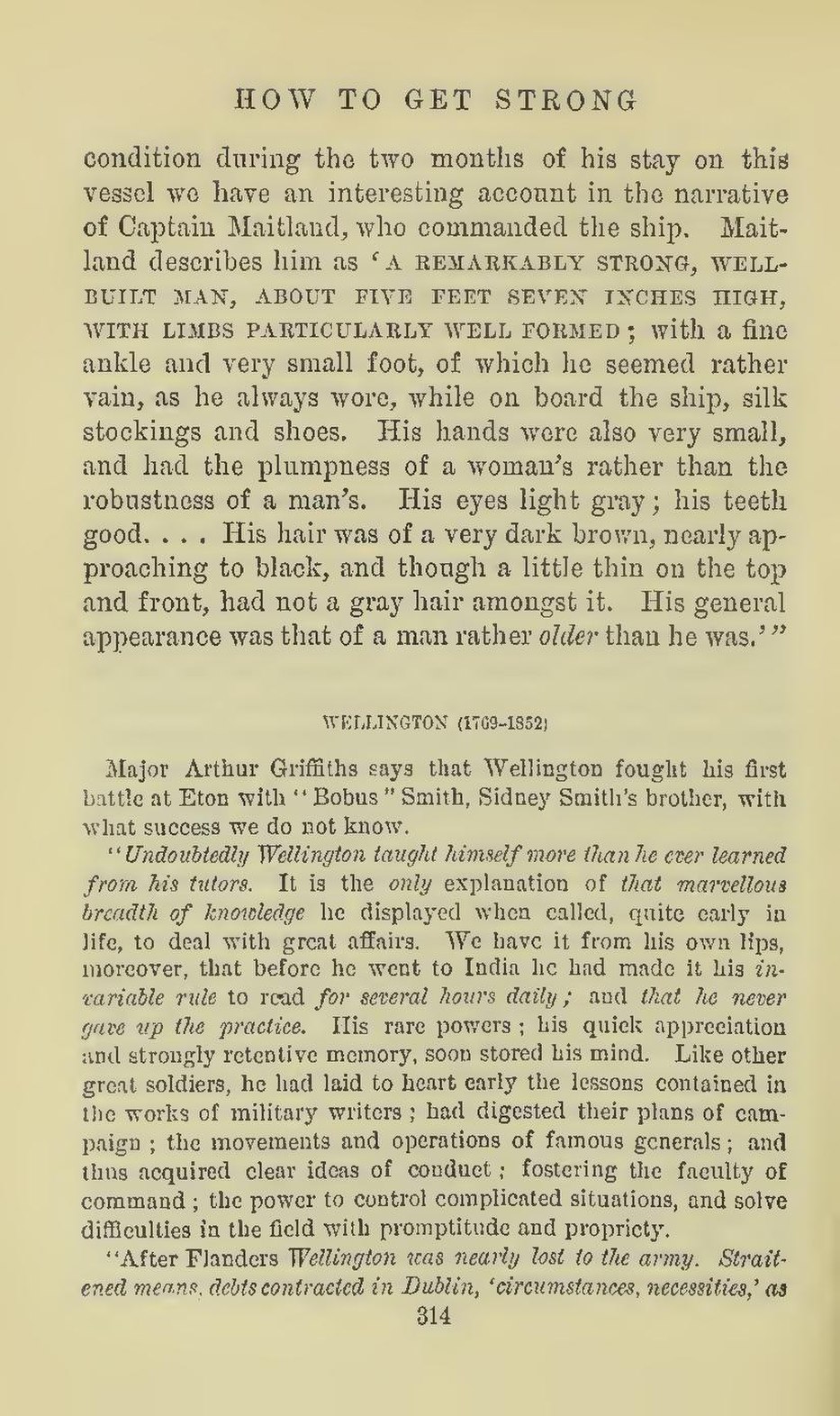HOW TO GET STRONG
condition during the two months of his stay on this vessel we have an interesting account in the narrative of Captain Maitland, who commanded the ship. Maitland describes him as a remarkably strong, well-built man, about five feet seven inches high, with limbs particularly well formed; with a fine ankle and very small foot, of which he seemed rather vain, as he always wore, while on board the ship, silk stockings and shoes. His hands were also very small, and had the plumpness of a woman's rather than the robustness of a man's. His eyes light gray; his teeth good.… His hair was of a very dark brown, nearly approaching to black, and though a little thin on the top and front, had not a gray hair amongst it. His general appearance was that of a man rather older than he was.'"
WELLINGTON (1769–1852)
"Undoubtedly Wellington taught himself more than he ever learned from his tutors. It is the only explanation of that marvellous breadth of knowledge he displayed when called, quite early in life, to deal with great affairs. We have it from his own lips, moreover, that before he went to India he had made it his invariable rule to read for several hours daily; and that he never gave up the practice. His rare powers; his quick appreciation and strongly retentive memory, soon stored his mind. Like other great soldiers, he had laid to heart early the lessons contained in the works of military writers; had digested their plans of campaign; the movements and operations of famous generals; and thus acquired clear ideas of conduct; fostering the faculty of command; the power to control complicated situations, and solve difficulties in the field with promptitude and propriety.
"After Flanders Wellington was nearly lost to the army. Straitened means, debts contracted in Dublin, 'circumstances, necessities' as314
